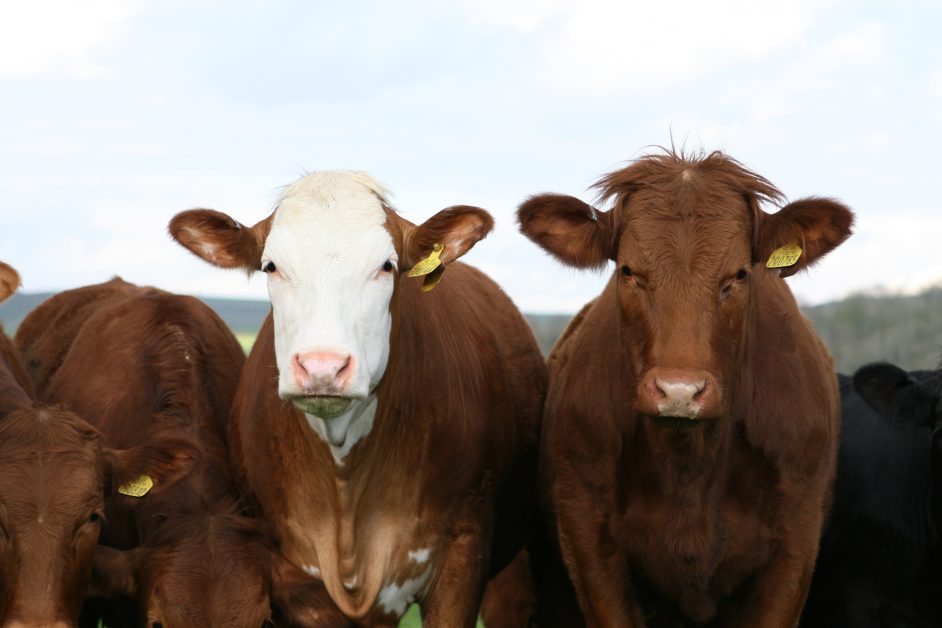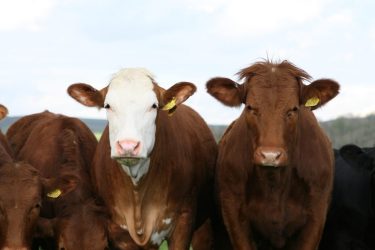Here’s a quick guide for beef livestock producers. It will show you how you can make more profit by increasing efficiency at every stage of production. Best of all, it will show you how to do this while reducing your farm’s emissions.
Promar, carbon footprinting, and beef farmers
Over the past 12 months, Promar has been conducting lots of carbon footprint audits for beef farmers. Understanding a farm’s emissions sources can be tricky. Modern-day businesses are complex and don’t fit into simple system descriptions.
However, our research has established some common themes. These fall into three major topics: inputs, animals, and nutrients, which I’ll outline below.
Inputs
Minimising food costs without compromising profitability is key for farms. Now, the emissions implicit in the production of the feeds are out of the control of the buyer.
Nonetheless, those emissions are allocated to the farm that buys them. So, it’s important to purchase wisely, and to reduce reliance on purchased feed by considering the following issues.
Digestibility – Focus on improving the digestibility of your home-grown grass and forage to increase its energy content. This maximises growth potential and reduces the need for purchased supplements. Furthermore, by decreasing the effort required to break the feed down in the rumen, methane emissions are decreased.
We work with farmers to modify their grazing management to improve grass quality. This includes increasing the frequency of silage cuts to raise energy density and decrease fibre.
Protein – Soya has a bad reputation in the climate sector. This is because of its association with Amazonian deforestation. Minimising its use can provide a big win for emissions reduction. However, cows need their protein, so farmers have to provide it.
The most efficient way to do this is by improving the quality of the food they graze. We work with farms to achieve this by assessing grass protein levels and working out how to improve it.
Solutions are always bespoke, based on our findings, but these include:
- sulphur applications in the fertilizer regime
- shortening cutting and grazing intervals
- stitching in clover
- improving field management to maintain legume content
Vitamins and minerals – Calving and growing cattle have high vitamin and mineral requirements. Ensuring that farms meet these needs is a great way to enhance feed utilisation. Animals should be checked for deficiencies, and findings should inform future on-farm actions.
Of course, all changes to inputs need to be based on evidence, and then made with precision, care and thought. The energy and protein content of feed should be matched to the exact nutritional requirements of the animal. A nutrition plan is key to making the best use of the feed resources at your disposal.
Animals – efficiencies reduce emissions
It goes without saying that cattle need food every day. This brings not just financial costs but emissions implications too, because methane is created as the animal digests the feed. So generally, the fewer days an animal is on farm, the less methane is produced.
This isn’t to say that everyone needs to switch to the most intensive production system. Far from it. Instead, at Promar we look at each individual animal’s inefficiencies.
Accurate recording and monitoring of your animals, particularly growth rates, will help to identify ways to improve efficiency. However, you must make sure that any monitoring process you put in place doesn’t add complexity to your day.
Recording and weighing software needs to be well integrated into your system and should be intuitive to use. A good one will save you time and money. A bad one costs both. In short, get advice.
Some targets to consider:
- Growth rates – measure the daily live weight gain (DLWG) for each group of animals. This can be done for individuals or batches. Modern beef genetics have tremendous feed conversion benefits. If they fit your system consider selecting modern bulls that score strongly in these areas.
- Weaning weights – for farmers buying in weaned calves, you should find out how efficient the milk phase has been. If this phase isn’t performing consider calf nutritional management, sourcing additional farm colostrum, and reassessing your vaccination policy and disease monitoring practices.
- Health recording – monitor disease and illness incidences. Identify problems early to avoid mortality. Chronic diseases can often fly under the radar so work with your vet to ensure you don’t have any underlying issues. Farms buying in stock will be challenging all animals with infectious diseases, so make sure your vaccination (or even quarantine) policy is top quality.
- Age at first calving – Getting suckler cows to calve at 2 years of age minimises the weight of animals on farm that aren’t producing any output. AHDB ran a big campaign on this topic, for good reason. They presented their key messages presented in this helpful video.
Nutrients
Of course, it’s vital to optimize the quality of the nutrients that you use. By carefully monitoring your land and managing it in a measured way, you can optimise its quality without wasting money. This will help your efforts to producing better quality animals that put more pounds in your pocket. Here are some key strategies to consider:
- Soil testing – Regular monitoring, particularly of its pH values, will help you to identify nutrient deficits. Then you can tailor your manure usage to meet your crop requirements.
- Manure storage – Correct storage is crucial to minimize nutrient loss prior to application. Consider using covered storage options to reduce exposure to the elements and maintain nutrient integrity
- Timing Nitrogen applications to crop requirements – This can help to minimize nitrogen volatilization and improve nutrient uptake. By applying nitrogen when crops need it most, farmers can reduce waste and improve efficiency. Regular soil and slurry sampling will enable you to match applications to requirements.
- Legumes – As previously mentioned, clovers will increase the protein content of grass swards. Additionally, farms with arable land can consider the incorporation of legumes into cover crops. This helps decrease fertiliser requirements, and potentially minimises leaching of nutrients over winter.
There’s a lot to consider – so seek advice
By implementing these strategies, beef farmers can take significant steps towards reducing their environmental impact while improving profitability. However, creating a strategy that takes so many variables into account can be complex and daunting.
For further support on these issues why not sign up with us for a DEFRA funded farm resilience visit? We’ll advise you on how to make the first steps towards hitting environmental targets, while improving your herd and enhancing your bottom line. Contact us today by clicking this link, tapping the button below, or by calling me, Lauren Busby, on 07866 820731.
Find out more about Promar’s sustainability consultancy service.






